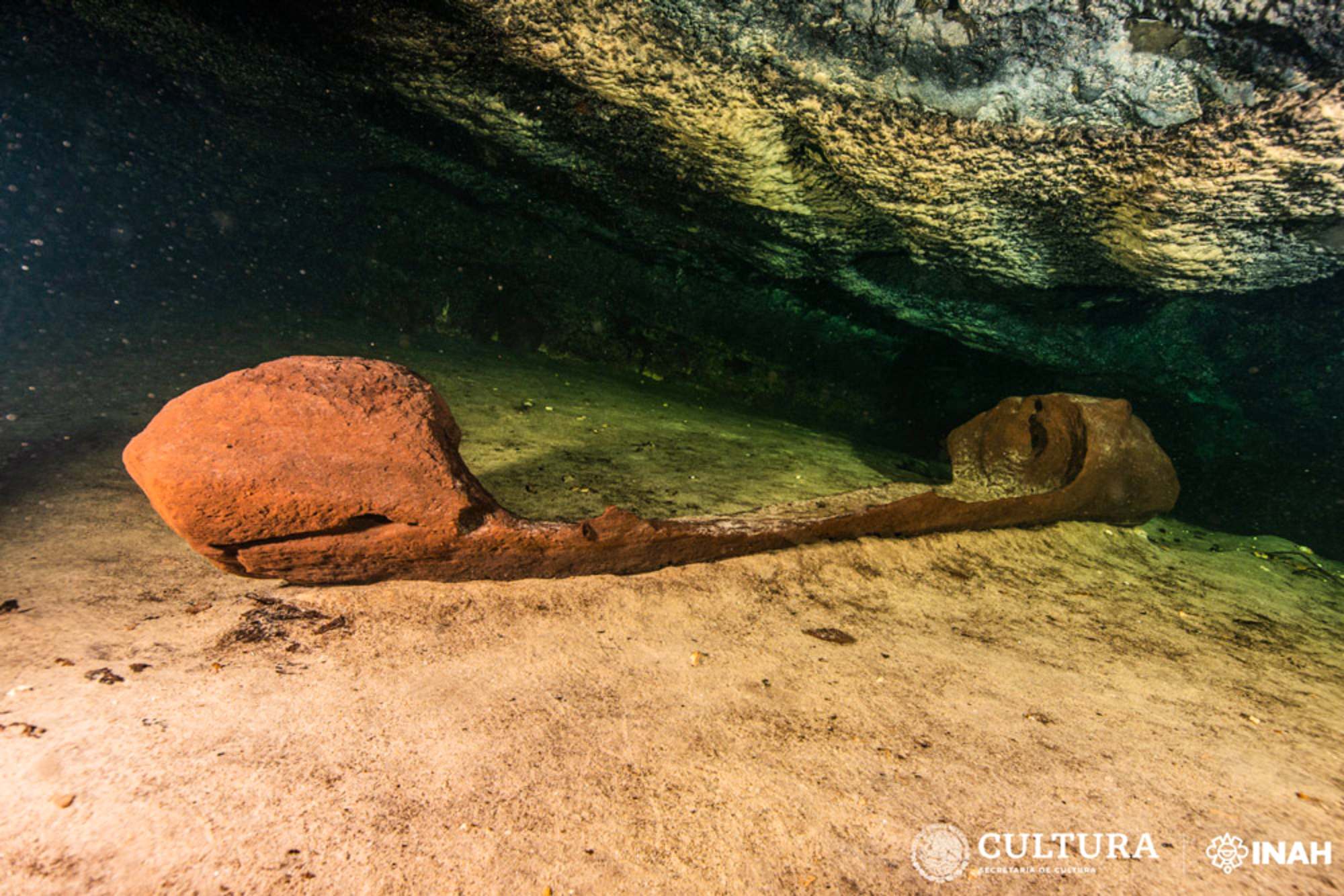Deep within the dense jungles of Mexico’s Yucatán Peninsula, a fascinating archaeological discovery has left experts intrigued and captivated. Unearthing a sunken canoe and armadillo remains may seem peculiar at first, but these findings hold a deeper significance. They may provide a clue to a long-held belief by the ancient Maya civilization – an entrance to the enigmatic underworld.

In 2021, divers exploring Mexico’s Yucatán Peninsula discovered an ancient boat submerged 15 feet (4.6 meters) beneath the water’s surface. Upon further inspection, archaeologists discovered a total of 38 skeletal remains, including a human metatarsal (foot bone) which is believed to have belonged to a woman. Bones from an armadillo, dog, turkey, and eagle were also uncovered, as revealed in a statement translated from Spanish.
The abundance of armadillo bones and the presence of the human foot have led researchers to conclude that the canoe may have been used by the Maya during a ritual and was intentionally placed inside the cave.
This idea is based on the fact that armadillos are adept swimmers capable of holding their breath underwater, using their claws to propel themselves forward. The researchers think that the armadillo remains could be an “allusion to the entry of the (armored animal) into the underworld,” according to the statement.
As per the Maya belief, flooded and semi-flooded caves and cenotes (sinkholes) were thought to be portals to the underworld. In addition, armadillos were regarded as an avatar to the Maya Chthonic god, known as God L, who was represented as a jaguar wearing a cape that mimicked the armadillo’s shell.
“There are known images in Mayan ceramics in which (the armadillo) appears as a ‘stool of the gods,’ with characters that place their feet on it,” explained Alexandra Biar, an archaeologist from the French National Center for Scientific Research (CNRS). “This would be directly linked to the archaeological evidence observed in the cenote,” with the armadillo serving as a manifestation of the deity.
Archaeologists can tell that the canoe was used for rites or rituals due to its heavy prow and stern, which would have made it hard to maneuver in rapid waters and likely not suitable for open ocean navigation.
According to Reuters, at the time of its discovery, the vessel was “tentatively dated” between 830-950 CE, which was around the end of the Maya civilization’s classical zenith. This was a point in history where Maya cities like Chichén Itzá (which was located near to where the canoe was found) thrived.
Carbon analysis, however, has revealed that the timber of the boat dates back to the 16th century, according to the statement.



